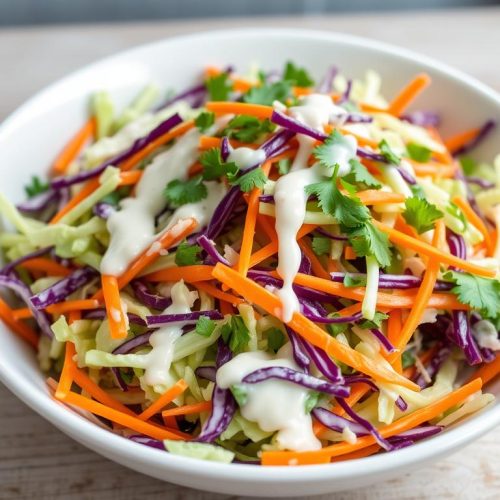Living with constant pain can make losing weight feel like a difficult struggle. Achieving a healthy weight can help reduce pain symptoms. With the right strategies and a mindful approach, it is possible. This comprehensive guide provides insights and practical tips on how to lose weight effectively while managing chronic pain.
Doing swimming or yoga regularly can improve fitness and help burn calories for people with chronic pain. Eating healthy reduces inflammation and improves well-being.
Consult a healthcare professional for a personalized weight loss plan that considers any limitations or sensitivities from chronic pain. Being dedicated and positive can aid in weight loss and improve your life.
Understanding How Your Weight Affects Your Chronic Pain
Chronic pain and weight – a complex, yet significant, relationship. Understanding this connection can be pivotal in managing your overall health. Let’s delve into it together.
Chronic pain is a persistent discomfort that lingers beyond the typical healing period of an injury, often lasting for more than three months. It can stem from various conditions such as arthritis, fibromyalgia, migraines, or even back problems. Now, you may be curious, “But what does this have to do with my weight?”
Here’s the connection: chronic pain can impact your physical activity levels. The discomfort may deter you from regular exercise or daily tasks, leading to a more sedentary lifestyle. Over time, this can contribute to weight gain.
On the flip side, carrying excess weight can intensify chronic pain. Extra pounds can strain your joints, exacerbating conditions like arthritis. Moreover, obesity is linked with inflammation which can worsen pain.
Managing weight is a critical part of chronic pain management and can enhance quality of life, not just a number on the scale. Eating a balanced diet and engaging in low-impact exercises, under medical guidance, can be beneficial. Remember, every step towards a healthier lifestyle counts.
This information is based on personal experiences and verified references, aiming to provide you with authentic, clear, and concise insights. Your journey with chronic pain is unique, and understanding the role weight plays in it can empower you to take control. Let’s navigate this path together.
Here are the best tips for effective weight loss with chronic pain.
1. Consult with Healthcare Professionals
Begin your weight loss journey by consulting with your healthcare team. Discuss your chronic pain condition, limitations, and aspirations for weight loss. They can provide guidance on safe exercises, dietary adjustments, and potential modifications based on your specific health needs.
Healthcare specialists can also assist you in setting realistic goals, monitoring your progress, and ensuring your weight loss journey is tailored to your individual needs. They can provide valuable expertise and support in managing your chronic pain while achieving your weight loss goals. Additionally, they can help monitor potential side effects or interactions with your current medications, ensuring your approach is safe and effective. By consulting with your healthcare team, you can embark on a secure and successful weight loss journey, receiving invaluable guidance every step of the way.Healthcare specialists can help you set goals and keep track of your progress. They can also give advice about managing pain while losing weight. They will make sure the plan is safe to use with any medicine you are taking. By talking to a healthcare specialist, you will get help and support as you go on your weight loss journey.
[Read More: Top Effective Tips How to Lose 3 Pounds in a Week]
2. Focus on Nutrition
Adopting a healthy lifestyle emphasizes the importance of a well-balanced, nutritious diet. Choose whole foods like fresh fruits, colourful vegetables, lean proteins, and nutrient-dense whole grains for vital nutrients.
Consulting a registered dietitian for guidance in making dietary decisions can be beneficial. They can collaborate with you to design a customized meal plan based on your health objectives, dietary limitations, and unique requirements.
A registered dietitian can also assist in managing chronic pain through specific nutrients. By considering your personal circumstances, they can provide insights on food sensitivities or allergies that may worsen your symptoms. This holistic approach focuses on optimizing body functions and effectively managing pain, rather than just weight loss.
Prioritizing nutrition helps in weight loss while ensuring your body gets the necessary nutrients for optimal functioning and pain management. Even minor diet modifications can significantly impact overall well-being. This information is grounded in personal experiences and verified references, offering authentic, understandable, and concise insights. Let’s navigate this journey together.
3. Mindful Eating Practices
Cultivate mindful eating to heighten your awareness of hunger and fullness cues. Take your time to chew each morsel, relishing every mouthful, while attentively tuning in to your body’s signals. This mindful approach aids in preventing overindulgence and fostering a healthier connection with food.
Incorporate a Balanced Diet: Aim to consume a balanced diet consisting of fruits, vegetables, lean proteins, and whole grains. This will provide your body with essential vitamins, minerals, and antioxidants while keeping your calorie intake in check. Additionally, including foods rich in omega-3 fatty acids, such as salmon or flaxseeds, can help reduce inflammation and alleviate pain.
Stay Hydrated: Proper hydration is crucial for overall health and weight management. Drinking adequate water throughout the day can help curb appetite, improve digestion, and keep your body functioning optimally. Consider replacing sugary beverages with water or herbal teas to minimize calorie intake.
Consult a Registered Dietitian: If you’re unsure about the best nutrition plan for
4. Stay Hydrated
Adequate hydration is essential for overall health and can also support weight loss. Drink plenty of water throughout the day, as it can help control appetite and promote optimal bodily functions.
For your specific needs, consulting with a registered Dietitian can provide personalized recommendations and guidance. They can help you create a nutrition plan that aligns with your goals, whether it’s weight loss, improving digestion, or optimizing your overall health. A registered dietitian can also provide education on portion sizes and nutrient-dense foods and address any specific concerns or dietary restrictions you may have. Investing in their expertise can set you on the right path to a healthier lifestyle.
5. Low-Impact Exercise
Engage in low-impact exercises that are gentle on the joints but effective for weight loss. Options such as swimming, water aerobics, or stationary cycling can provide cardiovascular benefits without putting excessive strain on painful areas.
These forms of exercise can help improve your overall fitness level and aid in burning calories. Additionally, incorporating strength training exercises into your routine can help build muscle, which can further support weight loss efforts. Remember to consult with a healthcare professional or a certified fitness trainer to ensure you are performing pushback exercises correctly and safely. Gradually increasing the intensity and duration of your workouts can help you reach your weight loss goals while minimizing the risk of injury.
6. Incorporate Strength Training
Include strength training exercises to build and maintain muscle mass. Strengthening the muscles around joints can provide support and improve functionality. Work with a physical therapist to develop a customized strength training program that considers your pain condition.
They can guide you in choosing the appropriate exercises and weights that will not exacerbate your pain. Additionally, incorporating strength training into your routine can help increase your metabolism and burn more calories even at rest. Remember to always listen to your body and stop any exercise that causes pain or discomfort.
7. Set Realistic Goals
Establish achievable and realistic weight loss goals. Slow and steady progress is key, aiming for a weight loss of 1-2 pounds per week. Celebrate small victories along the way to stay motivated and focused on long-term success.
8. Manage Stress
Chronic pain often coexists with stress, which can contribute to emotional eating and weight gain. Incorporate stress management techniques such as meditation, deep breathing exercises, or mindfulness practices to promote overall well-being.
9. Modify Physical Activity
Adapt your physical activity to accommodate your pain. Break exercises into shorter sessions, and choose activities that you enjoy and can tolerate. Listen to your body, and don’t push yourself too hard to avoid exacerbating pain.
If high-impact activities such as running or jumping are causing discomfort, consider low-impact exercises like swimming or cycling. Additionally, incorporating stretching and strengthening exercises into your routine can help improve flexibility and reduce pain. Remember to consult with a healthcare professional or physical therapist for personalized recommendations and guidance on modifying your physical activity. By making these adjustments, you can still enjoy the benefits of exercise while minimizing pain and discomfort.
10. Seek Support
Surround yourself with a supportive network. Share your weight loss journey with friends and family, or join a support group. Having a strong support system can provide encouragement, motivation, and a sense of camaraderie as you navigate the challenges of weight loss with chronic pain.
Additionally, consider seeking professional support from a therapist or counsellor who specializes in chronic pain management. They can provide valuable guidance and coping strategies to help you manage both the physical and emotional aspects of your weight loss journey. Remember, you don’t have to face this alone.
To support overall health and energy levels, focus on nourishing the body with nutrient-dense foods. Mindfulness techniques like meditation and deep breathing can help manage pain and reduce emotional eating triggers. Develop a personalized exercise routine considering physical limitations and preferences for enjoyable and sustainable weight loss. With dedication and support, successfully navigate weight loss while managing chronic pain.



